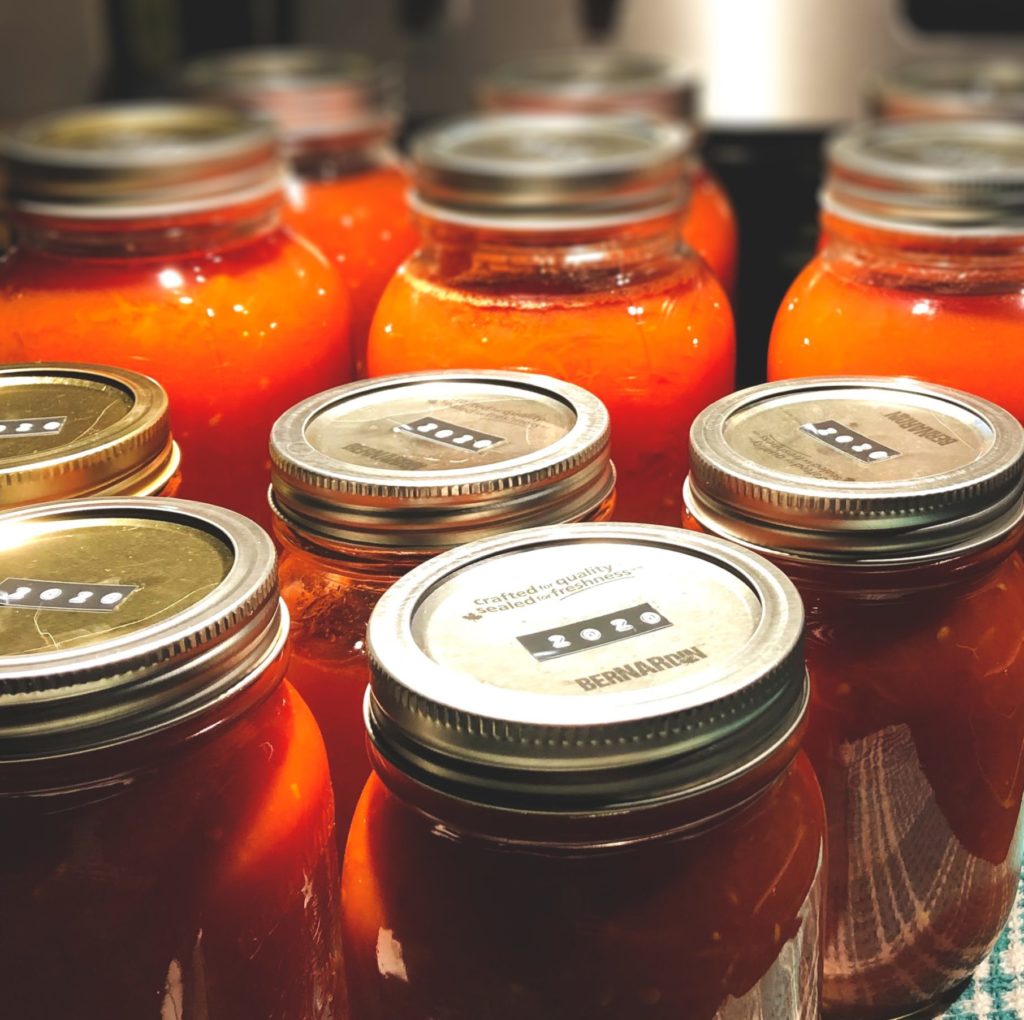Which autoclave to choose for jar sterilization?

The sterilization of canned food is developing for ecological reasons and to avoid the waste of food products. The market of sterilizers and retorts is rich and varied. Industrialists and artisanal canners can select several types of packaging: bottles, cans, glass jars, etc…
Thus, food industry professionals have a wide choice of retorts for jar sterilization.
Let’s zoom in on the different types of retorts dedicated to glass jars and their specific requirements.
The choice of glass jars for sterilization
The choice of the glass jar to use for sterilization of your food products is crucial.
Focus on why and how to use this type of container.
Why use glass jars for a canning sterilizer?
Historically, glass jars began to be used for canning in the early 1800’s. They replaced the less practical and less safe baked clay containers and molten glass bottles for food preservation. Since then, glass jars have become the preferred choice for professional food canning.
Glass jars also offer several food safety advantages.
- Glass is an inert, non-porous material that does not react with the food or beverage it contains. Therefore, glass jars do not transfer taste, smell or chemicals to food.
- Glass is a very heat resistant material, making it ideal for sterilization. Glass jars can be heated to high temperatures without warping or cracking.
- Glass jars are transparent, making it easy to see the condition of the food inside. This allows you to quickly detect any signs of spoilage or contamination.
Sterilization kills all micro-organisms in the food. Hermetically sealed glass jars prevent contamination and air leakage. They can therefore be stored safely for a long period of time.
How to prepare glass jars for sterilization?
Take certain precautions before sterilizing preserves in glass jars. You must prepare them carefully to ensure effective sterilization and proper food safety.
Cleaning each jar with water before using
Clean the jars with warm water and soap, then rinse thoroughly. Wash the lid and seal of the jar carefully. The next step is to put the jars in a dishwasher on high heat. Alternatively, boil them for 10 minutes.
Putting the product in a jar to ensure optimal conservation
You can then fill each jar with the prepared food according to the storage recipes. Be sure to leave an empty space between the product level and the top of the jar. Then close the jars with the sterilized lids and seals. Place them in a sterilizer or food retort to sterilize the products.
The different types of food retorts jar sterilizers
In France, industrial companies and artisanal canneries must respect regulatory requirements for food sterilization. The objective is to guarantee the quality and safety of products. Thus, each type of retort is part of a validated process. Parameters such as temperature, pressure and processing time must be optimized. The cycle allows to destroy efficiently all micro-organisms present in the food.
The food retort for artisanal canning
The retort is a sterilization equipment commonly used in artisanal canneries. This electrical device uses pressurized steam to destroy microbial contamination in food. It extends the shelf life of food and makes it safe for consumption.
Our Goût’stave retort is a perfect example. This electric and horizontal device works by water spraying. It is powerful and autonomous. Moreover, it completely meets the technical and financial expectations of small craft structures.
The retort for high volume processing in the food industry
The industrial food retort is used for processing large volumes of food in food processing plants. It is designed to handle a larger load.
Industrial food retorts can be of many types. Their heat comes from pressurized steam or hot water. Each type of retort has its own advantages and disadvantages in terms of cost, performance and compatibility with the type of food.
Requirements for a food retort for the sterilization of a jar
Let’s finally discuss the criteria for choosing your jar retort according to the requirements it must meet in France.
The list of criteria for choosing a food retort
Your choice of food retort should take into account:
- the space available in your production facility;
- the quantity of cans to be produced (number of liters);
- the availability of technical and material support.
- Other criteria may also be of interest, such as training in the process and use of the machine. Ask also about the list of available sterilization functions (timer, display of temperature and pressure curves, presence of probes to be placed in the heart of the products, etc.).
Requirements for the use of the food retort
All food retorts must respect the regulations applied in France, as well as the European standards and directives. To do this, the implementation of safety devices is recommended. The most common ones are the following:
- a protective frame for the sterilization chamber;
- a thermal protection of the lid;
- a locking system and a door opening alarm.
Other devices may be useful, such as pressure, temperature and water level sensors or a timer. Some retorts are also equipped with a temperature sensor to calculate the sterilization value (Fo) over a cycle, or a safety valve.
Are you looking for a food retort for the sterilization of jars? Do not hesitate to consult Steritech’s range of retorts. Do you need advice on a sterilization process? We can also answer your questions about the most appropriate model for your needs